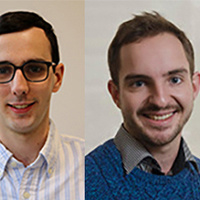Quantum Leaps in School Bus Routes
Like many public school districts, Boston’s faces a daily challenge: how to efficiently transport thousands of students to school on more than 600 buses without wasting money or learning time.
In 2017, however, officials turned to an unusual source for help: two Massachusetts Institute of Technology engineering and operations management Ph.D. students armed with a special algorithm, reports WBUR, Boston University’s public radio station.
Arthur Delarue and Sebastien Martin’s “Quantum,” developed with faculty adviser Dimitris Bertsimas, was the winning entry in the inaugural Boston Public Schools’ Transportation Challenge, a hackathon-style competition intended to generate ideas for streamlining routes, reducing emissions, and paring costs. The school system was spending $120 million a year to run its bus fleet – roughly 10 percent of total operating costs. 
Team Quantum used traffic data from Google Maps to analyze patterns during morning and afternoon rush hours, then combined that data with information provided by Boston Public Schools on students and their assigned schools. Using mapping software and optimization techniques, the researchers devised an algorithm to reduce the number of bus routes, reconfigure bus stops, maximize the number of students riding each bus, and cut the amount of time that empty buses are on the road. They also took into account the fact that some students required wheelchair-friendly buses and others needed home pickup.
The result resembles a Google Maps for school buses. “Basically, we try to make math useful,” Delarue told WBUR.
The Quantum analysis revealed that approximately 50 superfluous routes could be eliminated using the new method, eliminating 1 million miles of traffic-clogging bus trips and 20,000 pounds of carbon and saving the school district as much as $5 million annually. As many as 120 buses could be cut from the fleet. It also cut the time it took school officials to manually build school-bus routes – a multi-week process, according to a release – to about 30 minutes.
Since winning the contest, four other school districts reportedly approached Team Quantum for help. The system has room for improvement, however. Despite MIT’s help, tardiness remained a problem for Boston’s school buses in 2018, the Boston Globe reported.
MIT isn’t the only engineering school getting involved with designing more efficient bus routes and safer roads. Live video from highways and busy intersections streams into the Traffic Lab in the University of Utah’s civil and environmental engineering department. providing researchers real-time data on safety as well as the impact of changes. One recent lesson: drivers were confused by newly introduced traffic lights with left-turn signals, and in some cases led to an increase rather than reduction in collisions.
A University of Pittsburgh student has studied the shuttle bus routes that enable students to get to class across the sprawling campus.
Meanwhile, artists, school officials, and other innovators are transforming school buses into mobile fab labs, greenhouses, lunchrooms, and other educationally useful vehicles, reports Edutopia. In San Antonio, the GeekBus offers 12 STEM programs on subjects from cybersecurity to structural engineering and robotics in a 40-foot makerspace.
Filed under: Special Features
Tags: Boston Public Schools bus route design challenge, bus routes, MIT, school bus routes, traffic engineering, transportation engineering, University of Pittsburgh, University of Utah








